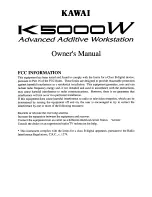
TLS 216 User Manual
3–67
Measuring Waveforms Automatically
The TLS 216 Logic Scope provides Measure, a feature for automatically
measuring the waveforms contained in the groups it acquires. If your measure-
ment is one of the 28 measurements available, the logic scope can take the
measurement and display it on screen.
This article describes automatic measurements — how to select them, display
them, restrict them to part of the waveform record, and how to take a snapshot of
them. For information on cursor and graticule measurements, see Measuring
Waveforms with Cursors on page 3–81 and Measurements on page 2–27.
To Understand Automated Measurements
Taking an automated measurement is generally more accurate and much quicker
than taking measurements by counting graticule lines. Plus, an automatic
measurement continuously updates on the screen as the logic scope acquires new
waveform data. To learn how to use Measure, consider some of its operating
characteristics.
H
The logic scope displays up to four measurements at one time. See Fig-
ure 3-31. (There is also a way to display all the single-waveform measure-
ments at once. See Snapshot of Measurements on page 3–78.)
H
The logic scope moves the measurements from the graticule area into the
side menu area if you press CLEAR MENU.
H
The logic scope calculates waveform parameters from the data acquired over
the entire waveform record, not just the portion displayed on screen, unless
measurement gating is turned on.
H
The logic scope calculates waveform parameters only from data acquired
over that part of the waveform enclosed by the vertical cursors if measure-
ment gating is turned on. (See page 3–72 for a discussion of gated measure-
ments.)
To learn what measurements are available and how they are defined, read
Table 3–3. It includes a brief definition of each of the automated measurements
the logic scope provides.
To learn more details about how the logic scope calculates each measurement,
see Appendix B: Algorithms in this manual.
Summary of Contents for P6240
Page 5: ......
Page 7: ......
Page 15: ...Table of Contents viii TLS 216 User Manual...
Page 20: ...Getting Started...
Page 26: ...Start Up 1 6 TLS 216 User Manual...
Page 51: ...Operating Basics...
Page 53: ...Overview 2 2 TLS 216 User Manual...
Page 73: ...Acquisition 2 22 TLS 216 User Manual...
Page 82: ...Reference...
Page 94: ...Adjusting the Vertical Setup 3 12 TLS 216 User Manual...
Page 104: ...Choosing an Acquisition Mode 3 22 TLS 216 User Manual...
Page 112: ...Choosing a Group Display Mode 3 30 TLS 216 User Manual...
Page 122: ...Customizing the Display 3 40 TLS 216 User Manual...
Page 130: ...Customizing the Display Colors 3 48 TLS 216 User Manual...
Page 162: ...Measuring Waveforms Automatically 3 80 TLS 216 User Manual...
Page 168: ...Measuring Waveforms with Cursors 3 86 TLS 216 User Manual...
Page 178: ...Printing a Hardcopy 3 96 TLS 216 User Manual...
Page 186: ...Probing of Circuits 3 104 TLS 216 User Manual...
Page 198: ...Saving and Recalling Waveforms 3 116 TLS 216 User Manual...
Page 222: ...Triggering on Patterns 3 140 TLS 216 User Manual...
Page 252: ...Triggering on States 3 170 TLS 216 User Manual...
Page 256: ...Viewing Status 3 174 TLS 216 User Manual...
Page 261: ...Appendices...
Page 283: ...Appendix B Algorithms B 18 TLS 216 User Manual...
Page 285: ...Appendix C Packaging for Shipment C 2 TLS 216 User Manual...
Page 290: ...Glossary...
Page 302: ...Glossary Glossary 12 TLS 216 User Manual...
Page 303: ...Index...
Page 319: ...Index Index 16 TLS 216 User Manual...
Page 320: ......
Page 321: ......
















































